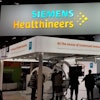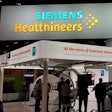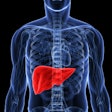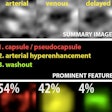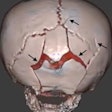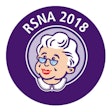
What abstracts will generate the most interest at RSNA 2018? If the winners of our Roadie awards are any indication, hot topics will range from gadolinium retention in MRI to cinematic rendering in advanced visualization -- with artificial intelligence appearing poised to steal the show once again.

The Roadie awards are presented to researchers whose abstracts receive the most page views in our Road to RSNA previews of scientific sessions at the annual RSNA show. Roadie awards are presented in each of our eight areas of focus, from Imaging Informatics to Artificial Intelligence.
Below are the Roadie winners for 2018. To view our entire Road to RSNA preview, visit our RADCast @ RSNA.
Advanced Visualization
Winner: Cinematic rendering bolsters visualization of acute trauma
In this Monday presentation, researchers from Canada will detail their initial experience with cinematically rendered images in the context of acute trauma. The group assessed the potential value of using cinematic rendering instead of traditional volume rendering to generate 3D images of patient anatomy.
Learn more about this abstract.
Artificial Intelligence
Winner: Machine learning reduces MRI scanning times
In this presentation, researchers will show how a machine learning-based image reconstruction algorithm can sharply lower scanning times for brain and lumbar MRI studies. The software reduced MRI scanning time by approximately 30% while producing similar overall image quality, the group found.
Learn more about this abstract.
CT
Winner: Photon-counting CT boosts resolution of lung imaging
U.S. researchers used photon-counting CT scans of the chest to capture tiny details in patients' lungs, with notably higher spatial resolution than conventional CT, according to this study to be presented on Sunday. Compared with the 350-micron pixel size and 512 x 512-matrix size of conventional CT, photon-counting CT offered better visualization of patient airways.
Learn more about this abstract.
Digital X-Ray
Winner: New x-ray detector design shows performance improvements
Canadian researchers are developing a new x-ray detector design that has shown improved performance in early trials, according to this Tuesday presentation. They will present details of the apodized-aperture pixel (AAP) x-ray detector technology, which uses microelements (0.01-0.025 mm) to reproduce and refine current clinical pixel sizes (0.07-0.2 mm) for better images.
Learn more about this abstract.
Imaging Informatics
Winner: Imaging CDS pilot reveals factors for success
Pennsylvania researchers learned some valuable lessons when they implemented imaging clinical decision-support (CDS) software, which they'll share in this Wednesday talk. The researchers determined that successful implementation of imaging CDS systems is predicated upon context-relevant mapping of indications to appropriate use criteria, as well as understanding variations in how and why imaging studies are ordered.
Learn more about this abstract.
MRI
Winner: How widespread is gadolinium accumulation in the brain?
Gadolinium accumulation in the brain may occur with both linear and macrocyclic contrast agents, and it could be more widespread than previously thought, according to researchers from Switzerland. The group found different levels of signal intensity in different parts of the brain based on whether patients received a linear or a macrocyclic gadolinium-based contrast agent.
Learn more about this abstract.
Ultrasound
Winner: Subharmonic ultrasound improves prostate diagnosis
Contrast-enhanced transrectal subharmonic ultrasound improves the diagnosis of prostate cancer compared with conventional transrectal ultrasound, according to this Sunday morning scientific presentation. Two subharmonic imaging parameters -- estimated perfusion and peak intensity -- showed a significant difference between benign and malignant biopsy cores that conventional ultrasound did not.
Learn more about this abstract.
Women's Imaging
Winner: Deep-learning networks help classify breast density
Deep-learning networks can help classify breast tissue density, according to researchers from NYU Langone Medical Center. The group performed a reader study comparing the performance of a deep-learning algorithm with that of three radiologists, who evaluated density in 100 mammograms using the BI-RADS scale.

